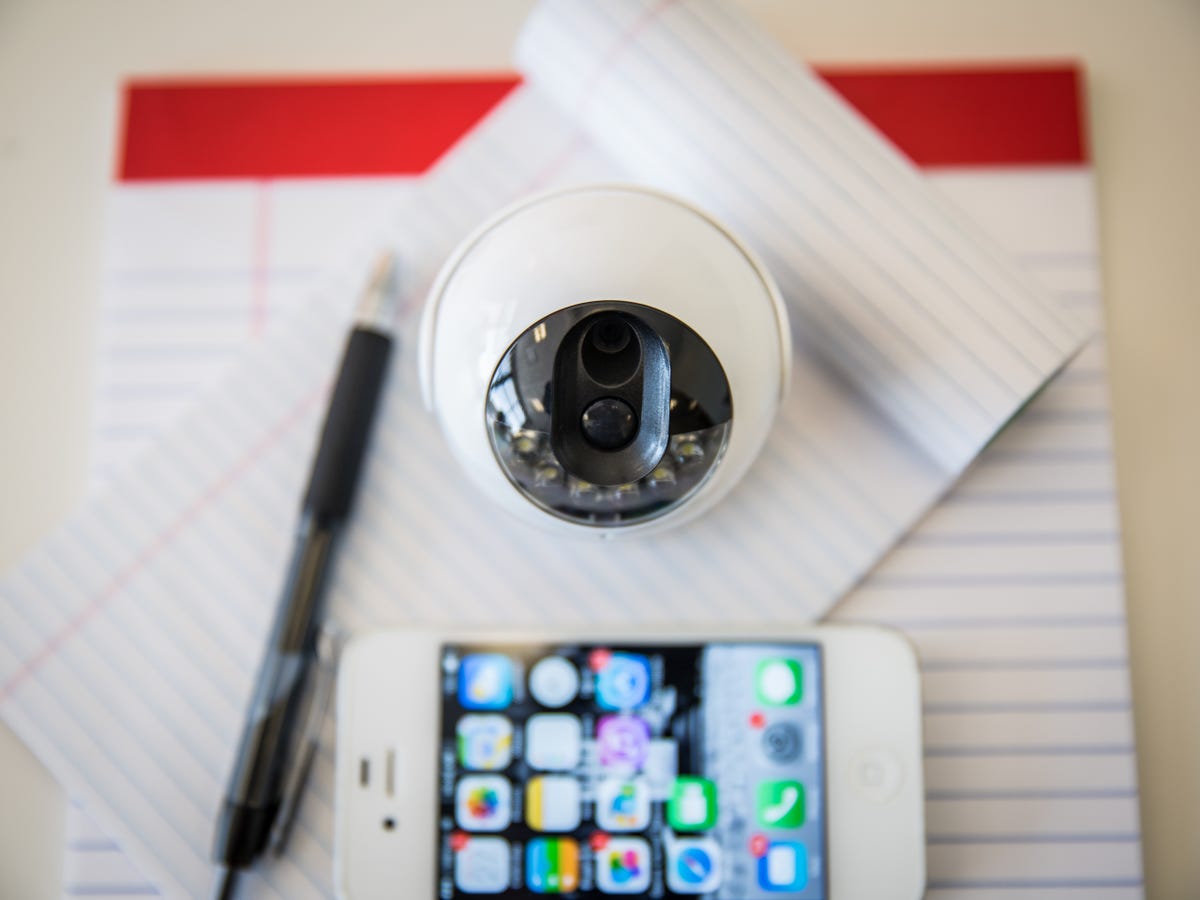7 features to look out for in a home security camera
Here's how the most common home security camera features work.

7 features to look for in a home security camera
One of the greatest tools in home security is the networked security camera. They come in an array of sizes and shapes, and they have a laundry list of features that can make choosing just one rather difficult. Here is a breakdown of some of the more common security camera features you should consider before biting the bullet.
Motion sensing
The importance of motion sensing for security cameras cannot be overstated, especially if you want to record any suspicious activity that may go on while the camera is active. Rather than recording 24-7, which can quickly fill up a local or cloud storage drive, with motion sensing, you can pause recording until something moves in the frame. You can also receive alerts on your computer or phone if something moves when it shouldn't.
Arguably even more effective is audio sensing, which can alert you or prompt video recording when audio is detected in the area around the security camera.
Two-way audio
Speakers on a security camera enable two-way communication between the person monitoring the video stream and the person in front of the camera. With this, you could communicate with a person knocking on your front door when you're home alone or away, or you could also notify an intruder that law enforcement is on its way and that they have been caught on camera.
Field of view
Field of view (or viewing angle) is an important factor to consider when both purchasing and installing security cameras. The viewing angle will determine where you position the cameras and exactly how much they can see at a time.
A camera with a narrower field of view will capture less, but it also offers greater detail, as it will appear closer to the subject. A wider viewing angle will make the camera appear further away and allow you to see more without having to reposition or rotate the camera.
Video quality
One of the most important features of a security camera is its image quality. For years, security camera capabilities lagged far behind recording resolutions found on common video cameras, producing choppy, pixelated video with slow refresh rates. Most modern security cameras offer at least 720p resolution, and many even offer as high as 1080p for recording and streaming.
While high definition security video sounds like the perfect way to keep watch on your home, it poses a problem of its own: streaming one or more 1080p feeds can chew through your home Internet bandwidth. Before you pay extra for HD, make sure your Internet connection can handle the payload.
Power source
Most security cameras simply plug into a standard outlet, meaning they can be placed practically anywhere, so long as you have a long enough extension cord. However, some security cameras, such as Homeboy, Netgear Arlo, and Flir FX are battery operated or offer it as an option. This dramatically expands the possibilities when it comes to positioning the cameras around the house, but adds the hurdle of constantly replacing or recharging batteries. Having the option of battery power, however, can be very helpful.
Low-light or infrared mode
Low-light cameras use image intensifiers to amplify very small amounts of ambient (visible) light and create a significantly brighter image with discernible details. This is the same technology used in night-vision goggles, but it also comes with limitations. Namely, if there is no visible light around, a light amplification camera won't see anything. Many cameras which use this technology will emit near-infrared energy to try and improve the effectiveness of the camera at night without drawing too much attention to itself.
Thermal imaging, on the other hand, works in an entirely different way. It requires no visible light to work, only heat. Thermal imaging sensors detect tiny differences in thermal or infrared energy (heat) and depict those differences through various levels of gray. While thermal imaging can work in total darkness, it also has a limitation of its own: a noticeable lack in finer details and color.
Cloud or local storage
A security camera that doesn't save or record what it captures isn't very effective, especially if you're hoping to prosecute an intruder. That's why most security cameras offer either local or cloud storage (and sometimes, though rarely, both).
Local storage is a surefire way to capture everything that happens. The video feed is saved directly to a nearby storage drive as a video, but there's a catch. If you record everything (as opposed to only when motion is detected), you might fill up the drive and no longer be able to save footage until you empty the hard drive.
With cloud storage, you can sidestep that conundrum, but there are even more caveats. Could storage options typically charge a per-month or annual fee and limit the amount of footage you can store, either to several days or by the number of video clips saved to your account. If you don't want your footage lost forever, you will need to regularly offload footage from the cloud account to a local drive or another cloud storage service.

